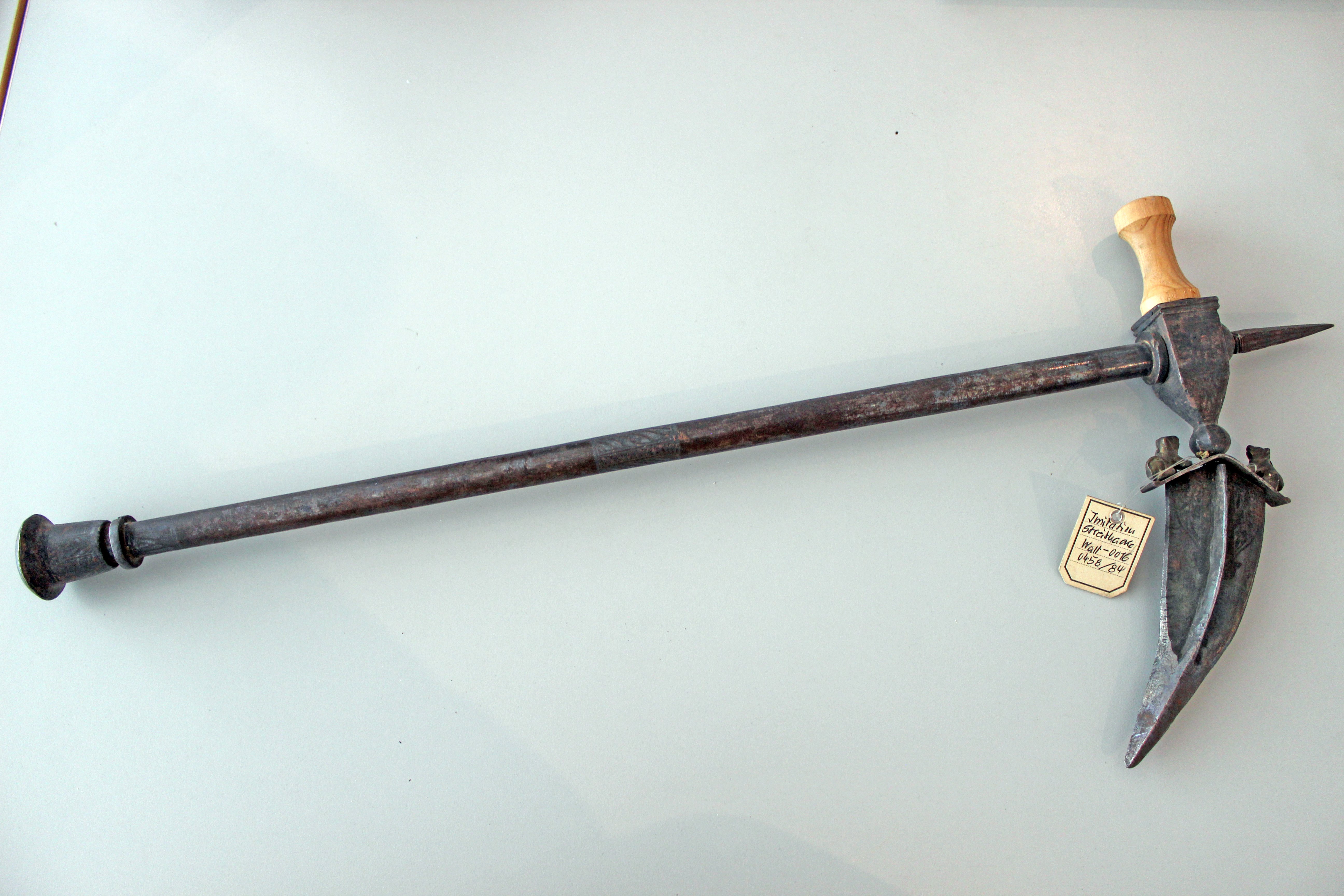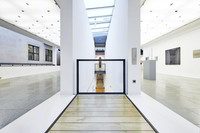An imitation of an Indic battle axe resp. war hammer, so-called zaghnal. It has a handle from an iron pipe that ends in a knob. The handle is decorated at its bell-like end and in the middle with engraved leaf-shaped ornaments. The axe has a four-sided midsection with a pike on top. The midsection ends on one side in a pyramid shape that, in turn, ends at its tip with a ball. Moreover, it is decorated with engraved ornaments on its surface. To the side with the pyramid affiliates a blade resp. a tip for striking. The blade has a thick midrib on both sides and is bent downwards. On the attachment of the blade sit two brass lions and it is provided with leaf ornaments. The hammer head on the opposite side is missing and is replaced by a wooden part.
According to the description in the inventory, an elephant figure from messing was originally applied as hammer. It is common that zaghnals have decorative elements or figures instead of the hammer plane. The elephant is a frequently used motive. The figure has a practical as well as a symbolic function: it serves as a counterbalance to the blade and as a symbol for strength. Perhaps the elephant figure is an allusion to the elephant-headed Hindu deity Ganesha as a "remover of obstacles".
The zaghnal is a close-combat weapon first for the use on horseback but also for the use afoot.
The object at hand is presumably an imitation of such an Indian battle-axe. If it was produced in India or comes from European manufacture is not assured. The zaghnal came as a gift from the general Richard Erlenbusch (1863 - 1937) in 1923 into the collection of the Gewerbemuseum (Museum of Applied Arts) Ulm.
en

